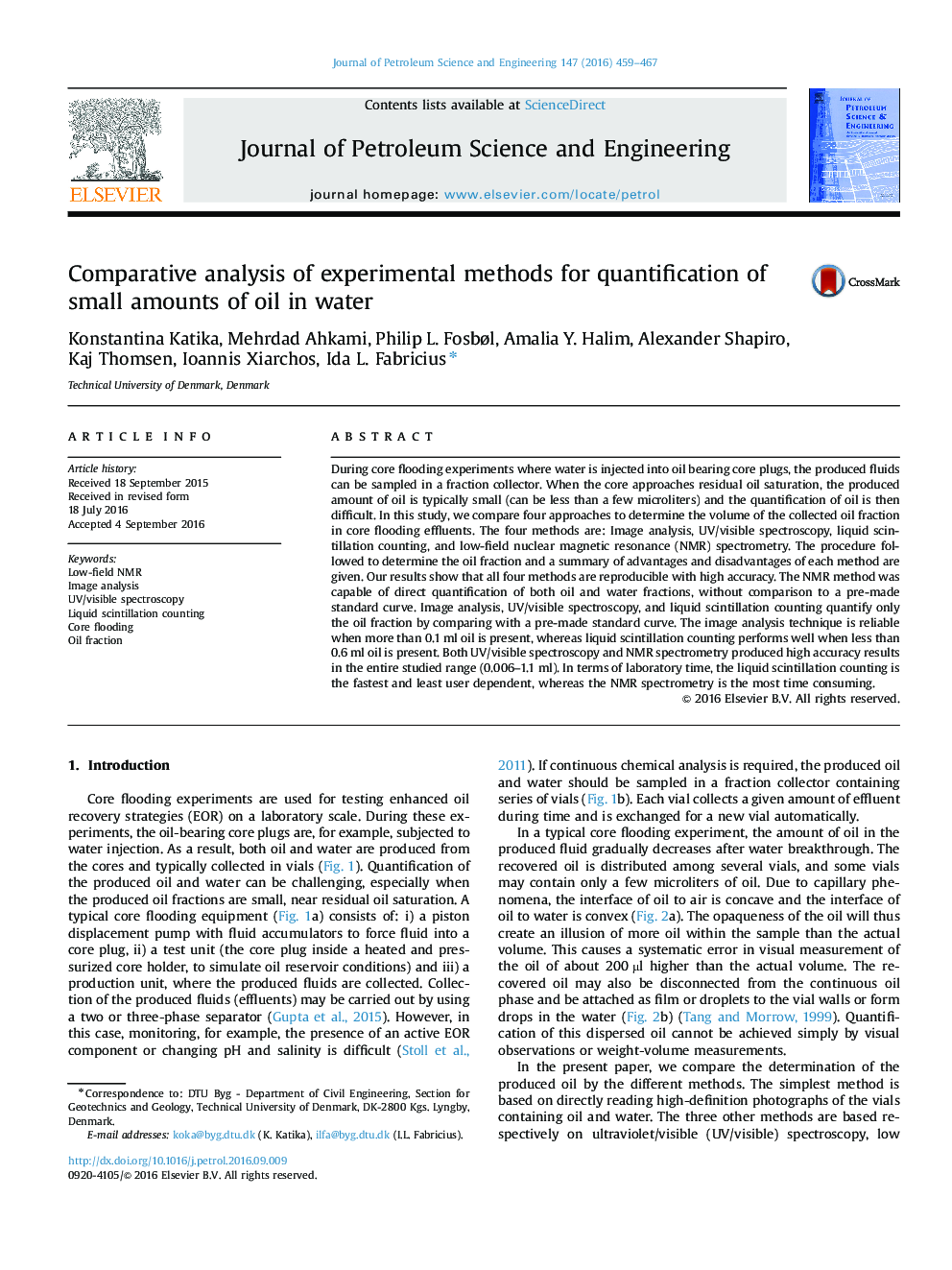| Article ID | Journal | Published Year | Pages | File Type |
|---|---|---|---|---|
| 8125739 | Journal of Petroleum Science and Engineering | 2016 | 9 Pages |
Abstract
During core flooding experiments where water is injected into oil bearing core plugs, the produced fluids can be sampled in a fraction collector. When the core approaches residual oil saturation, the produced amount of oil is typically small (can be less than a few microliters) and the quantification of oil is then difficult. In this study, we compare four approaches to determine the volume of the collected oil fraction in core flooding effluents. The four methods are: Image analysis, UV/visible spectroscopy, liquid scintillation counting, and low-field nuclear magnetic resonance (NMR) spectrometry. The procedure followed to determine the oil fraction and a summary of advantages and disadvantages of each method are given. Our results show that all four methods are reproducible with high accuracy. The NMR method was capable of direct quantification of both oil and water fractions, without comparison to a pre-made standard curve. Image analysis, UV/visible spectroscopy, and liquid scintillation counting quantify only the oil fraction by comparing with a pre-made standard curve. The image analysis technique is reliable when more than 0.1Â ml oil is present, whereas liquid scintillation counting performs well when less than 0.6Â ml oil is present. Both UV/visible spectroscopy and NMR spectrometry produced high accuracy results in the entire studied range (0.006-1.1Â ml). In terms of laboratory time, the liquid scintillation counting is the fastest and least user dependent, whereas the NMR spectrometry is the most time consuming.
Keywords
Related Topics
Physical Sciences and Engineering
Earth and Planetary Sciences
Economic Geology
Authors
Konstantina Katika, Mehrdad Ahkami, Philip L. Fosbøl, Amalia Y. Halim, Alexander Shapiro, Kaj Thomsen, Ioannis Xiarchos, Ida L. Fabricius,
